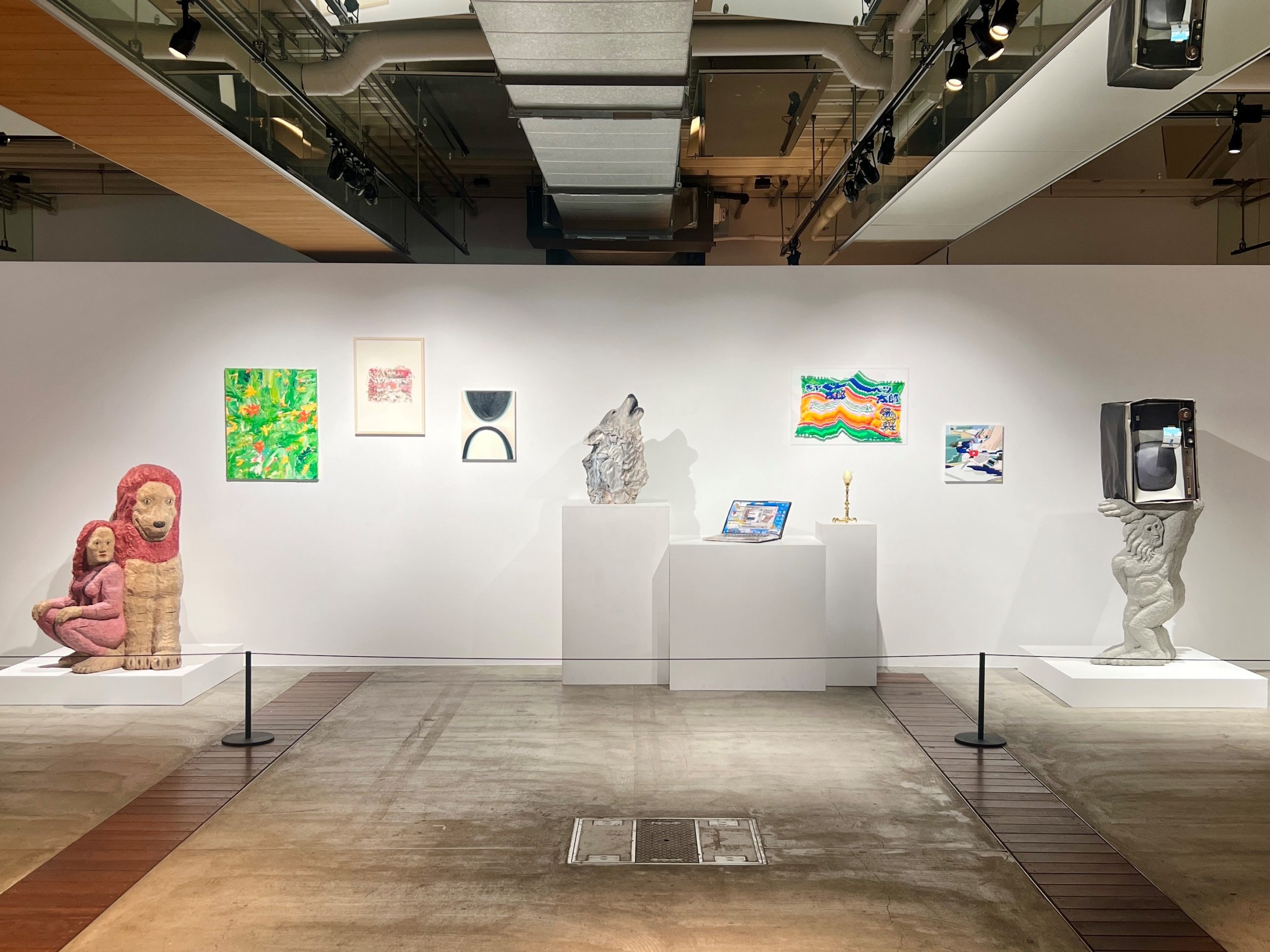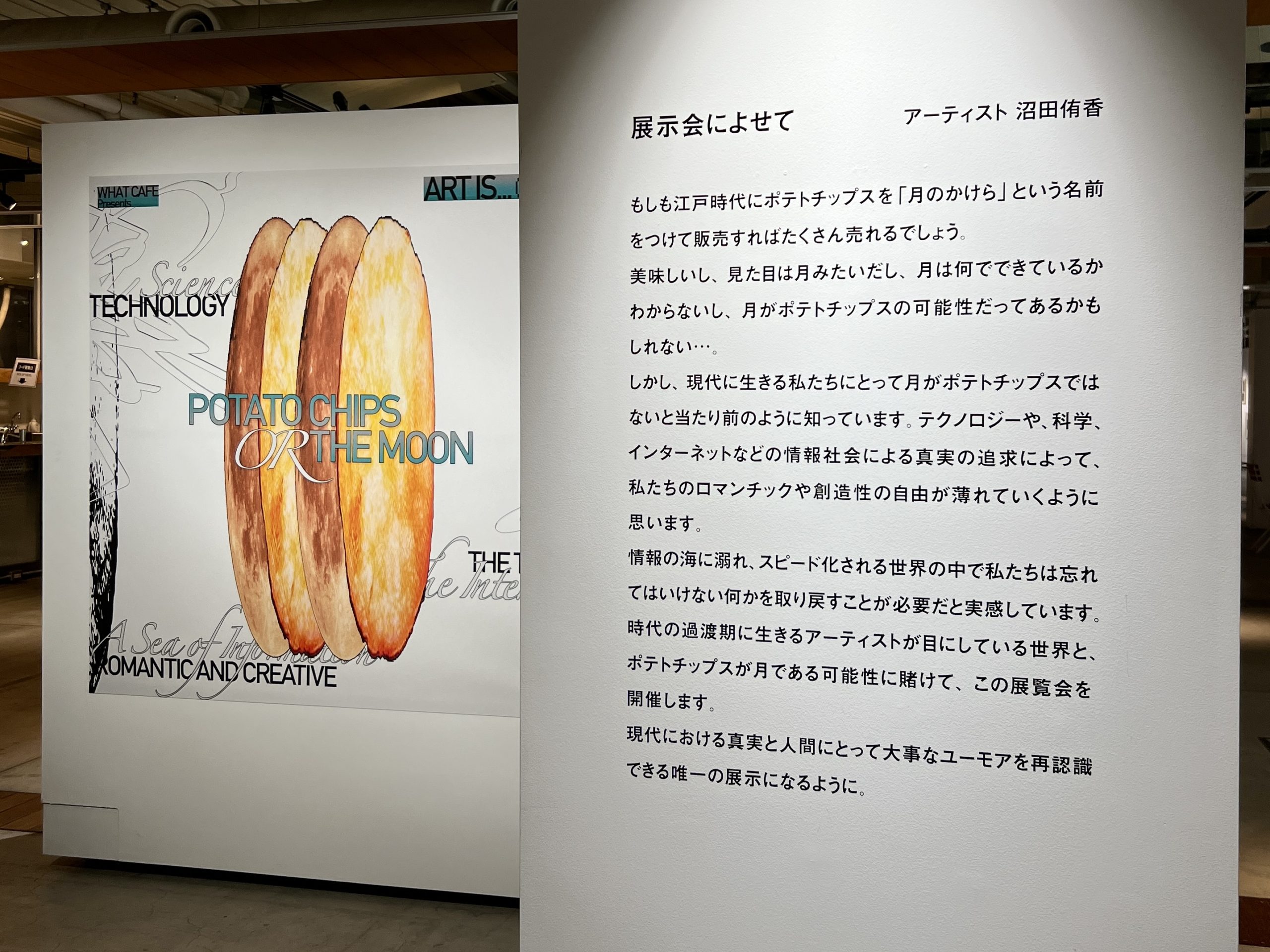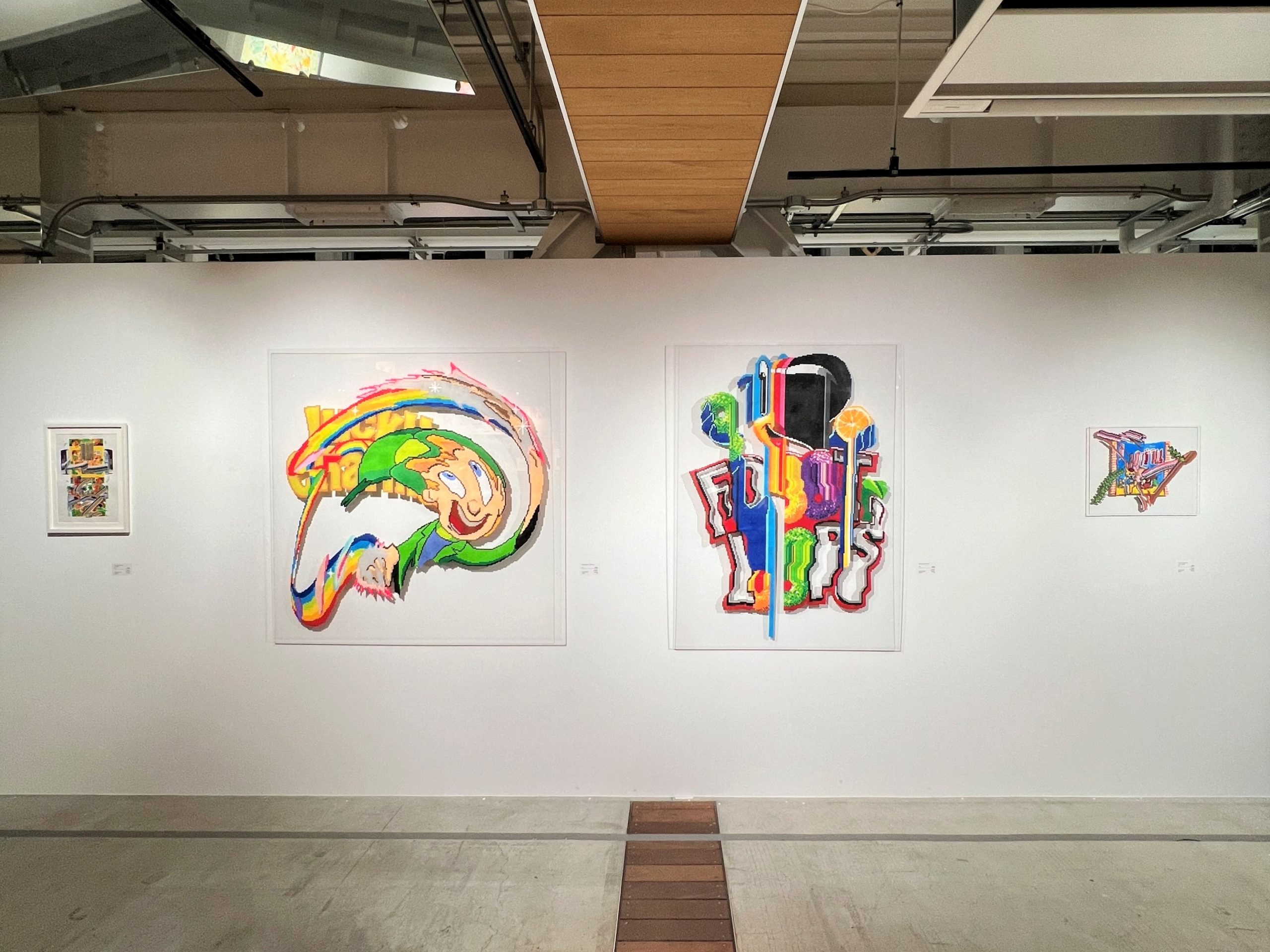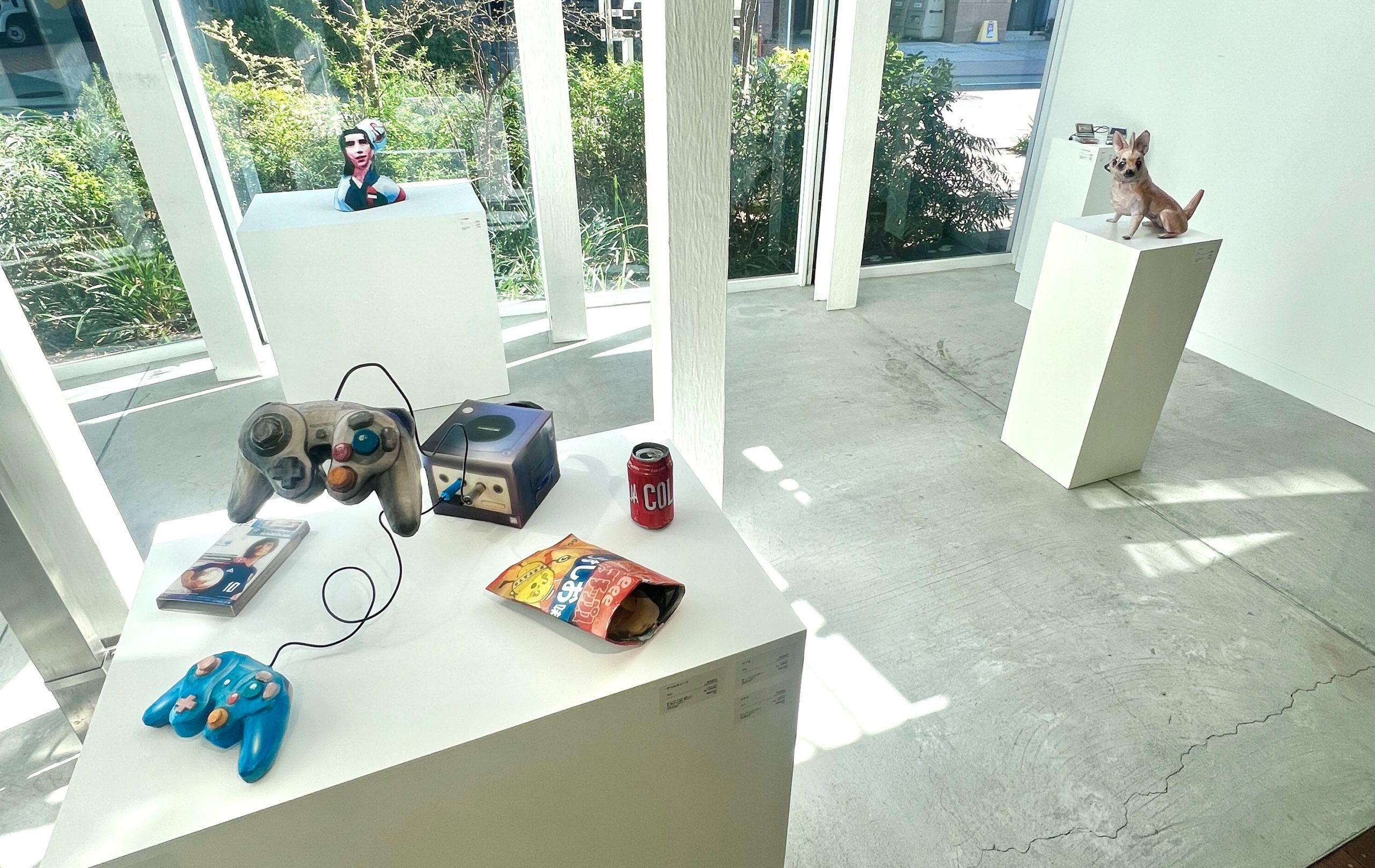展示レビュー
WHAT CAFE EXHIBITION vol.35
WHAT CAFE EXHIBITION vol.35 展示レビュー
WHAT CAFE EXHIBITION vol.35 Review
WHAT CAFE EXHIBITION vol.35 Review
WHAT CAFE EXHIBITION vol.35 Review
2024/03/22 | レビュアー:高橋亮 レビュアー:Ryo Takahashi レビュアー:Ryo Takahashi レビュアー:Ryo Takahashi
本展は、現代アーティストの沼田侑香さんが企画の初期段階からディレクションを担当し、総勢10名のアーティストの作品を紹介する展覧会です。コンセプト策定からアーティスト選定、展示構成や会期中に開催するイベントなど、展覧会を設計する過程の中で互いの時代性や表現手法の違いを議論して生まれた、アーティストの想いや熱気に触れることができるように設計されています。昨今はギャラリストやキュレーターではなく、アーティスト自身が主体となって企画される展覧会も増えてきており、この展覧会でも個々の独自性を担保しつつ、1つの展覧会をアーティストの手によって作り上げられています。
This exhibition features the work of a total of ten artists, with contemporary artist Yuka Numata taking on the role of directing the project from its initial planning stages. The exhibition was designed to provide visitors with the opportunity to get a sense of the ideas and enthusiasm that the artists had when discussing differences between their perceptions of contemporaneity, and their respective artistic practices, during the planning process, from concept formation and artist selection to exhibition structure and tie-in events. Recently, it is becoming more and more common for exhibitions to be planned primarily by artists themselves rather than gallerists or curators, and this is one such example—an exhibition put together by the artists, while ensuring the individuality of each artist.<br />
[タイトルウォールには沼田の本展に寄せたステートメント]<br /> もしも江戸時代にポテトチップスを「月のかけら」という名前をつけて販売すればたくさん売れるでしょう。美味しいし、見た目は月みたいだし、月は何でできているかわからないし、月がポテトチップスの可能性だってあるかもしれない…。<br /> (以下省略)<br />
On the exhibition’s title wall is a statement from Numata, which begins as follows:<br /> If potato chips were sold during the Edo period with the name “moon fragments,” they would have done a roaring trade. They taste great, they look like the moon, and since we have no idea what the moon is made of, for all we know, maybe the moon is made of potato chips.<br />
上記の文章から始まるテキストにおいてもわかるように、展覧会紹介のキーにもなるステートメントの1文目から空想的な文言が並ぶ、まさにアーティスト然とした態度で取り組まれた展覧会であることがわかります。<br /> 何だかわかるようで、何だかよくわからない。でも、どうも気になる。<br /> そんな期待が膨らみ、鑑賞者の想像力を掻き立てるコラボレーションが会場で表現されています。<br />
As is clear even from the text that begins with the quote above, with imaginative wordings from the first sentence of the statement, which serves as a crucial introduction, the exhibition has been undertaken with a truly artistic attitude.<br /> You can get a glimpse into the artist’s thinking, while still somehow not understanding. But it draws you in, nevertheless.<br /> The venue serves as a platform for collaboration that excites viewers in anticipation and stirs their imagination.<br />
本展のディレクターであり、出展アーティストでもある沼田さんの作品は、現代における時代性や世代の特徴を取り込んだ作品を制作しています。ゲームやPC機器などで発生するバグが彼女の作品の中での特徴的な表現で、馴染み深いお菓子などのパッケージがバグにジャックされたような作品が並んでいました。また、Windows黎明期の動きの悪いPCがフリーズした時を彷彿させる文字の歪な連続や、軌跡が印象的でした。<br />
Numata, the director of this exhibition and a participating artist, creates works that incorporate distinctive characteristics tied to the current time and to her generation. She features the kind of bugs that arise in video games and computing devices in her work, and she exhibited a series that resembles glitched-up versions of the well-known snack packaging for this show. Also impressive were works reminiscent of a frozen, poorly functioning computer from the early days of Windows, with strings of distorted text and their trails.
次に、時吉あきなさんは関西を拠点に活動されているアーティスト。彼女は、スマートフォンで撮影した対象の写真をコピー用紙に出力し、原寸大の立体コラージュとして再現する作品を制作しています。本展では、「不完全さ/無駄さ」の象徴として「バグ」「エラー」「ブレ」をテーマにして制作された作品が展示されていました。動物をモチーフにした作品が象徴的なのですが、ゲーム機や缶コーラ、ポテトチップスやゲームソフトなどこの展覧会に向けて制作し展示された作品は、彼女の新しい制作の幅を見れたように感じました。<br />
Next up, I would like to highlight Akina Tokiyoshi, a Kansai-based artist who prints smartphone photographs onto printer paper that is then used to create full-scale, three-dimensional collages that reproduce the original image. For this exhibition, Tokiyoshi created works on the theme of bugs, errors, and blurring as symbols for imperfection and waste. Animal motifs are emblematic of the artist, but it seemed that an expanded range was on display at this exhibition, with the creation of works depicting video game consoles, cola cans, potato chips, and video game software.
最後に、この展示会のために2人のアーティストが制作した共作をご紹介。立体作品を制作する丸山太郎さんは、アクションフィギュアやシュルレアリスムからの影響を受け、「どうしたら面白くなるか?」と常に考えながら、怖さと優しさが共存するような作品を制作しています。大橋鉄郎さんはペーパークラフトの立体作品の制作等を通して、自身の軽薄さや無知さを、視覚的なイリュージョンとシニカルな態度という二面性によって自虐的に表現。この2人のアーティストが今回発表した立体作品は大きな見どころのひとつでした。<br /> <br /> マスキュリンな男性と現代的な電子機器の代表的な一例であるテレビを組み合わせた作品は今展しか見ることのできない特別な作品であり、現代的な立体作品を手掛けるアーティスト2人が関わる作品として、モチーフの組み合わせやその質感に独自性を感じました。
Finally, let me introduce a collaboration that two of the artists worked on for this exhibition. Taro Maruyama makes three-dimensional pieces, and is influenced by action figures and surrealism. His sculptures have a gentleness to them, while also being frightening, and he is always questioning how he can make things more compelling. Tetsuro Ohashi’s self-deprecating art combines visual illusion and cynicism in paper craft sculptures that show the artist’s own frivolity and naivety. The three-dimensional work that these two artists prepared for the occasion was one of the real highlights of the exhibition.<br /> <br /> Combining a masculine male figure and a television—a quintessential example of modern electronic devices—this was a special piece, exclusive to this exhibition. As a work involving two artists engaged in the field of contemporary three-dimensional art, its unique character was evident in the combination of motifs, and the textures.
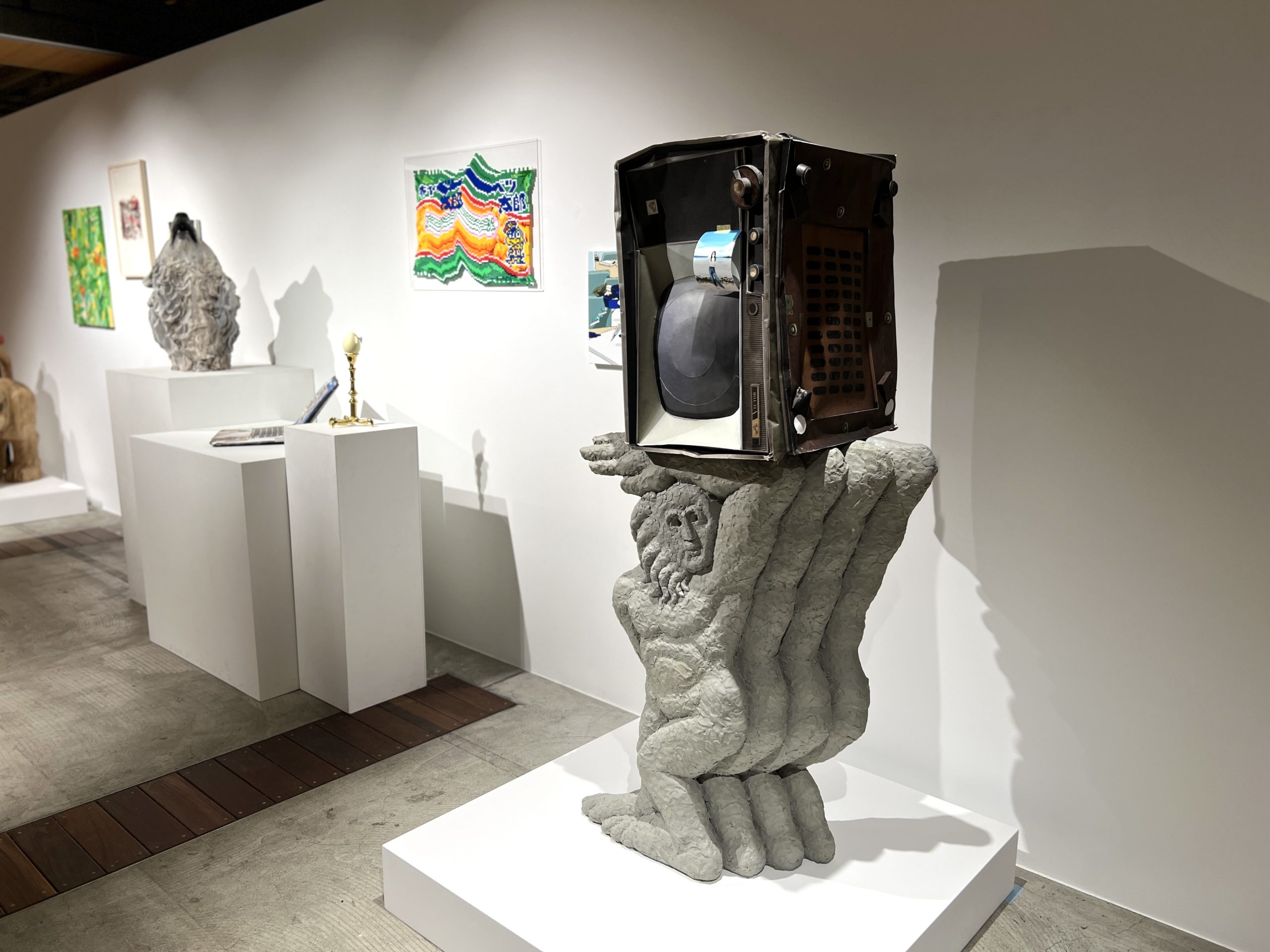
丸山太郎×大橋鉄郎
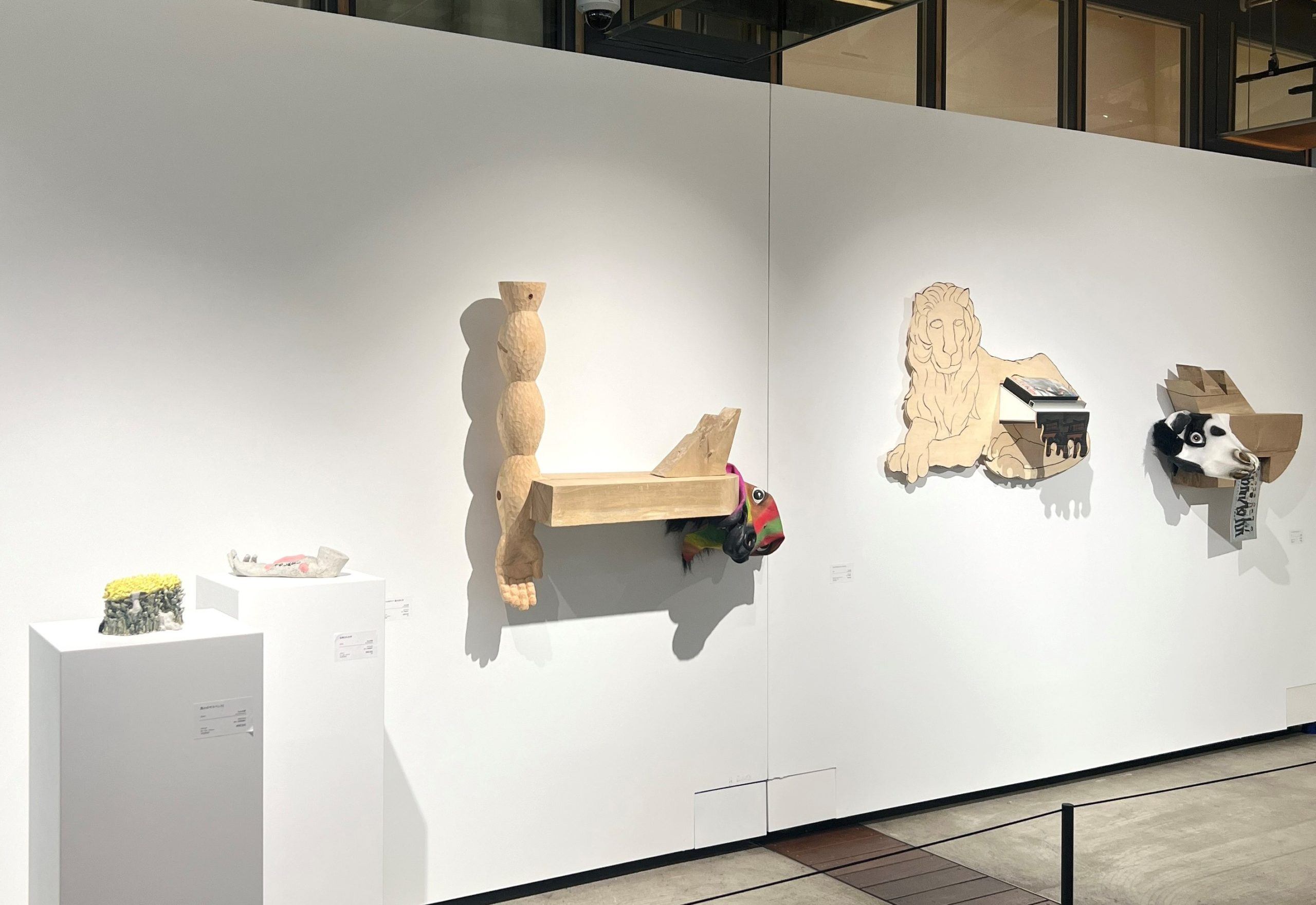
丸山太郎
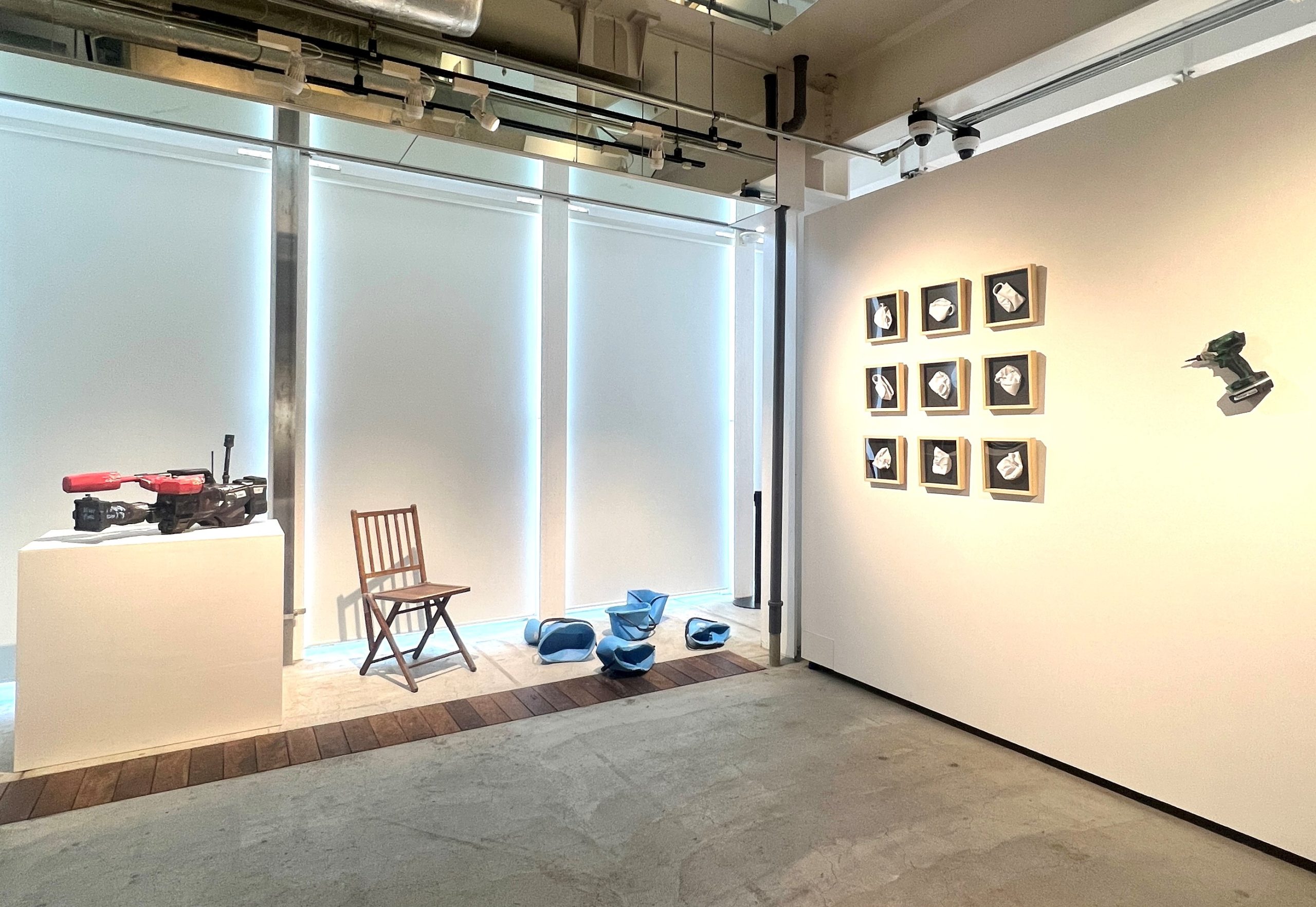
大橋鉄郎
ここまでに数人の出展アーティストを抜粋して紹介しましたが、天王洲エリアの中でもエントリーモデルの展示が多くおこなわれる会場であるWHAT CAFEにおいて、アーティストがディレクションするグループ展としてチャレンジングかつ意欲的な企画でした。また、WHAT CAFEではこれまでにも様々なコラボレーションを横断的におこなってきたが、アーティスト発の本展でまた新しい展示のカタチを提示しており、現代アートを展示販売するスペースとして新しいあり方を常に模索する姿勢を改めて感じさせられました。
The above text has introduced a selection of the exhibiting artists at this challenging and ambitious artist-directed project—a group exhibition at WHAT CAFE, a venue in the Tennozu area that hosts a large number of open-call shows. WHAT CAFE has undertaken a range of interdisciplinary collaborations that cut through conventional barriers, and this artist-driven exhibition represents
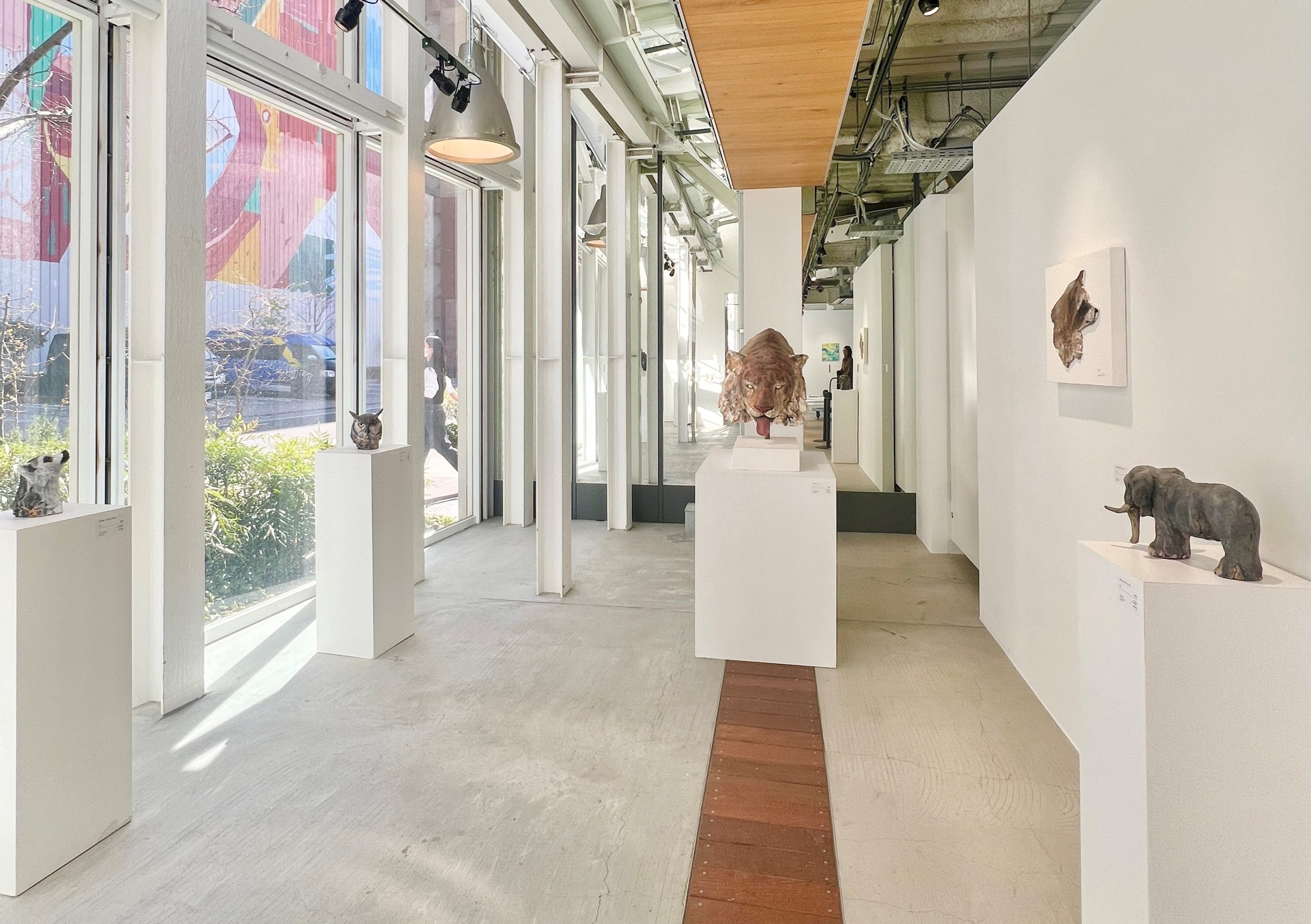
瀬戸優
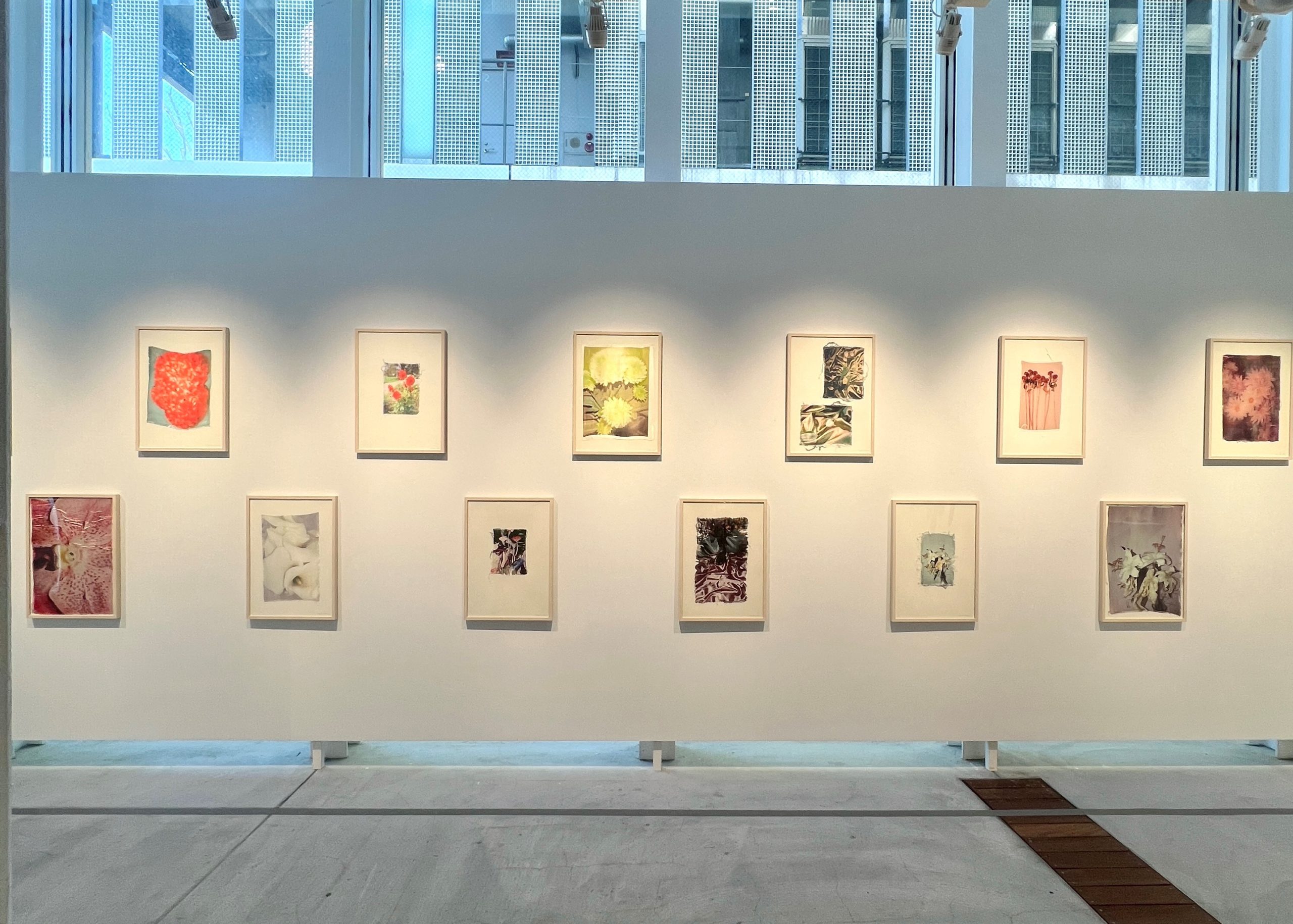
遠藤文香
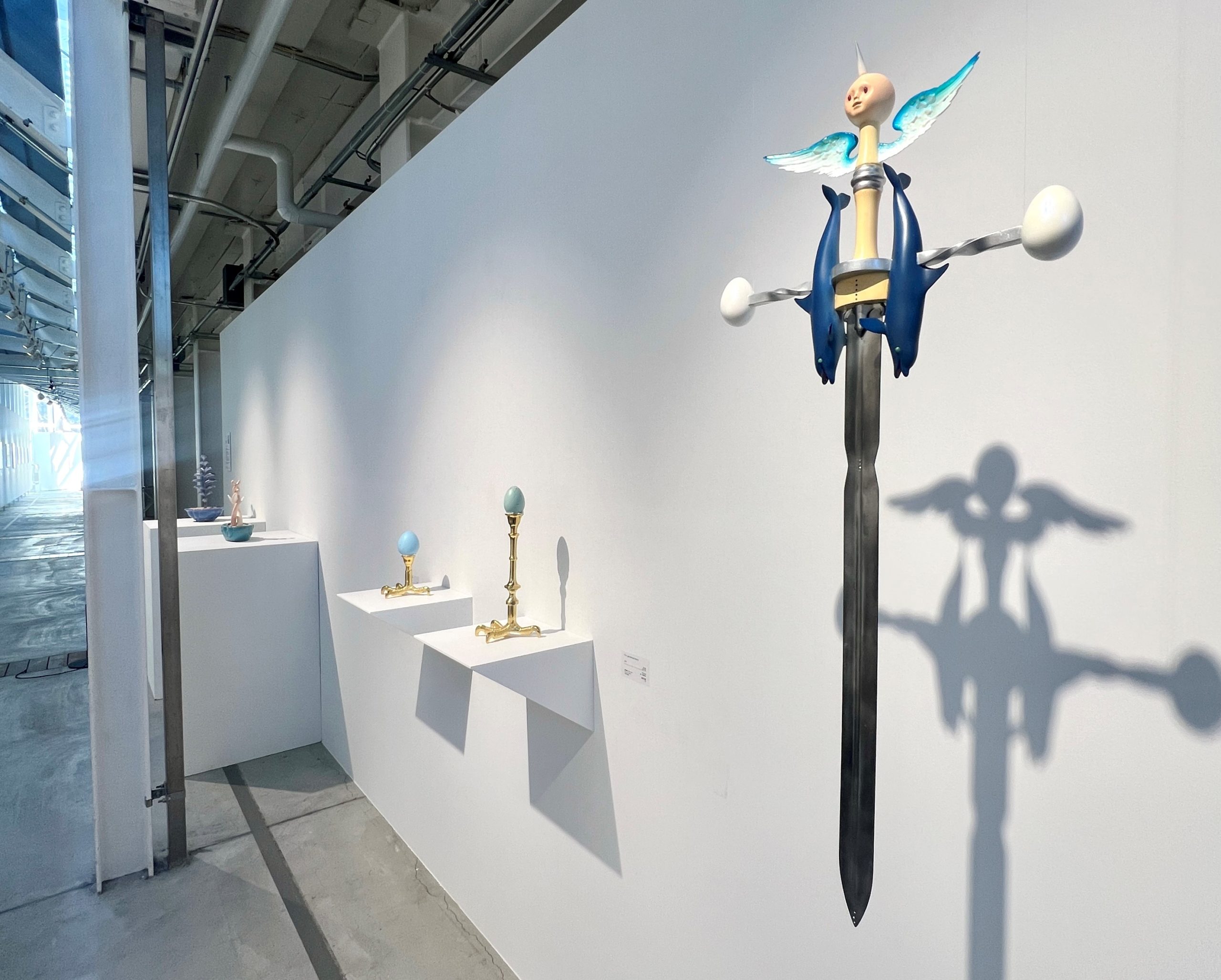
王之玉
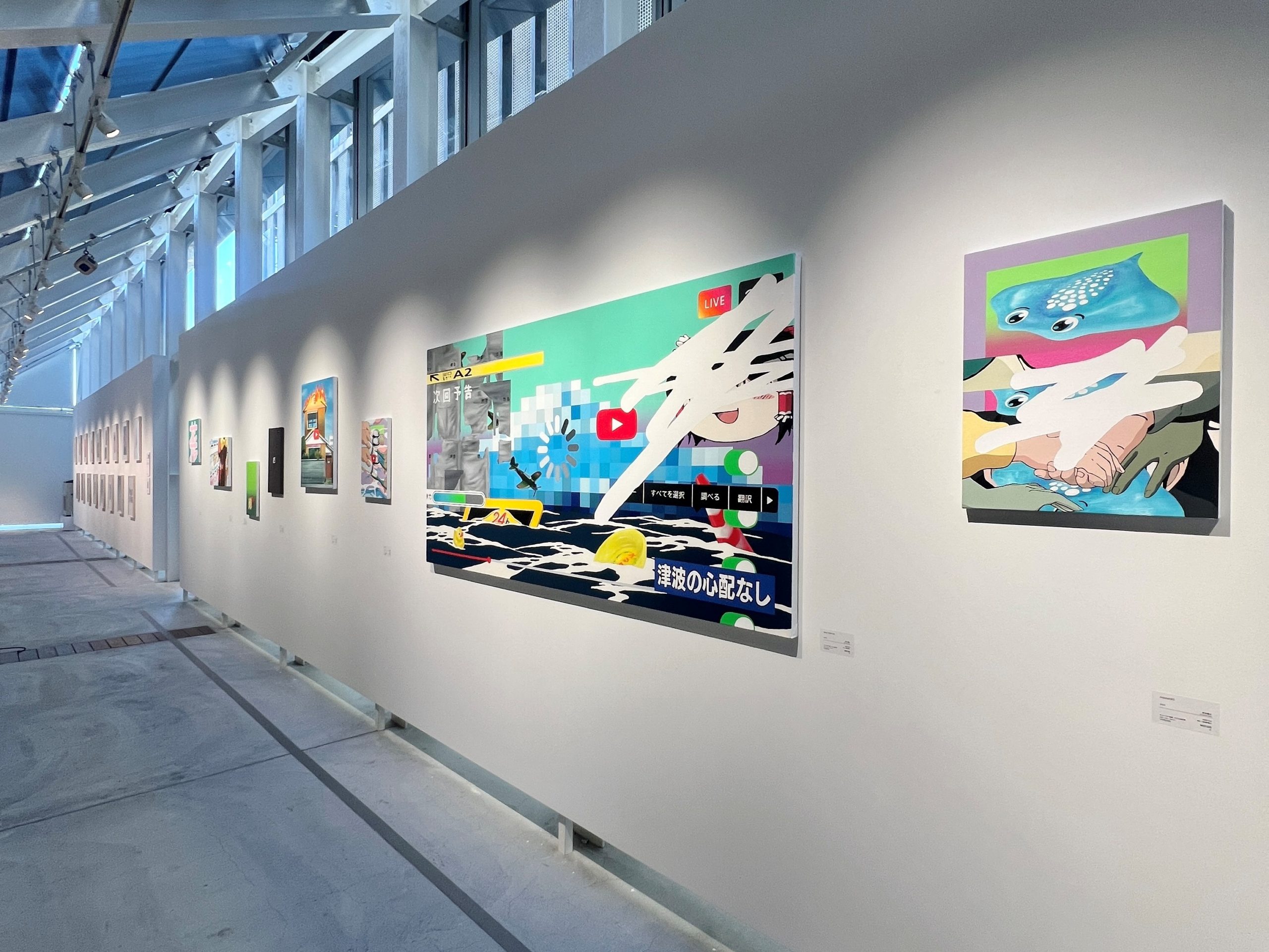
斉木駿介
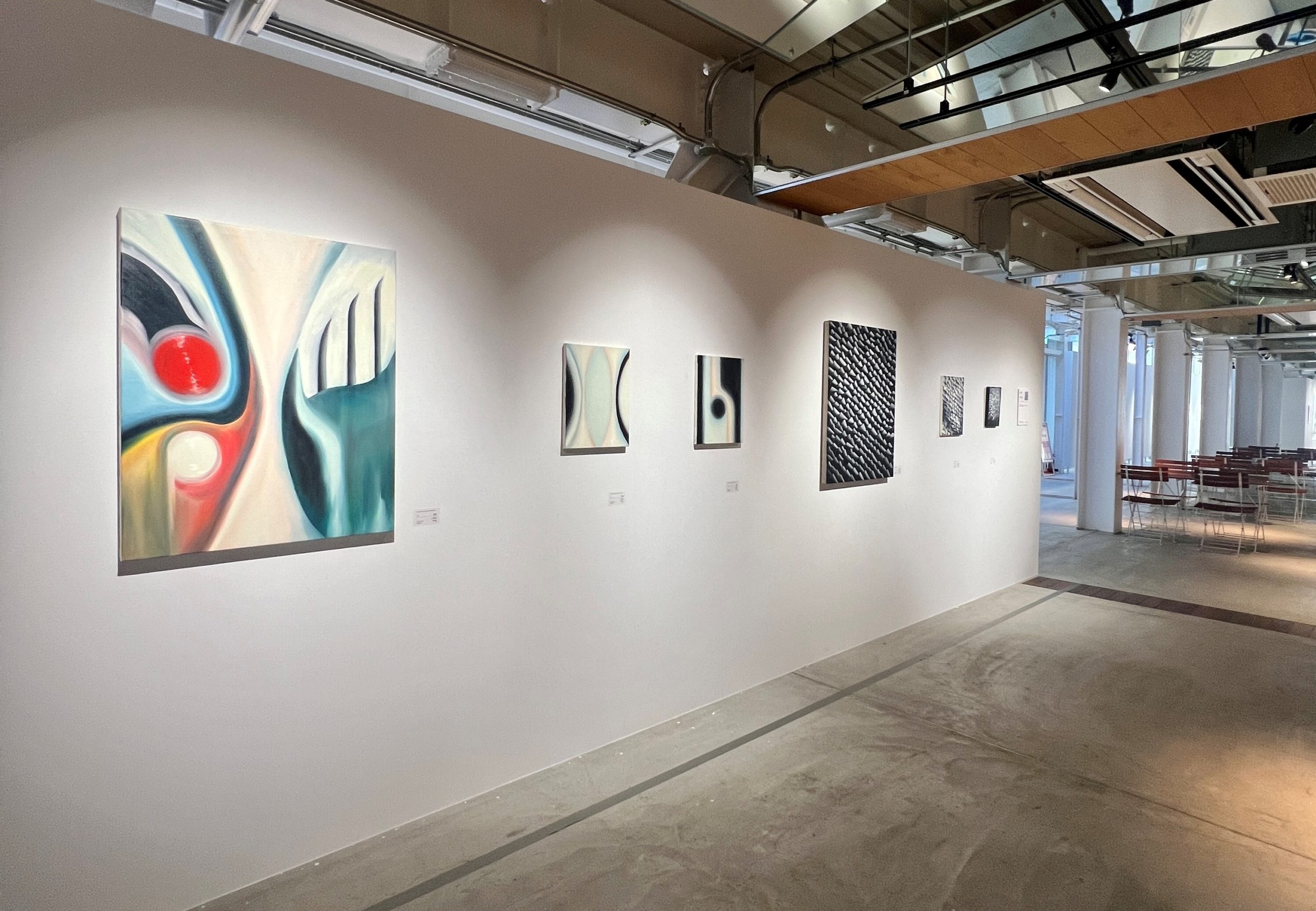
酒井建治
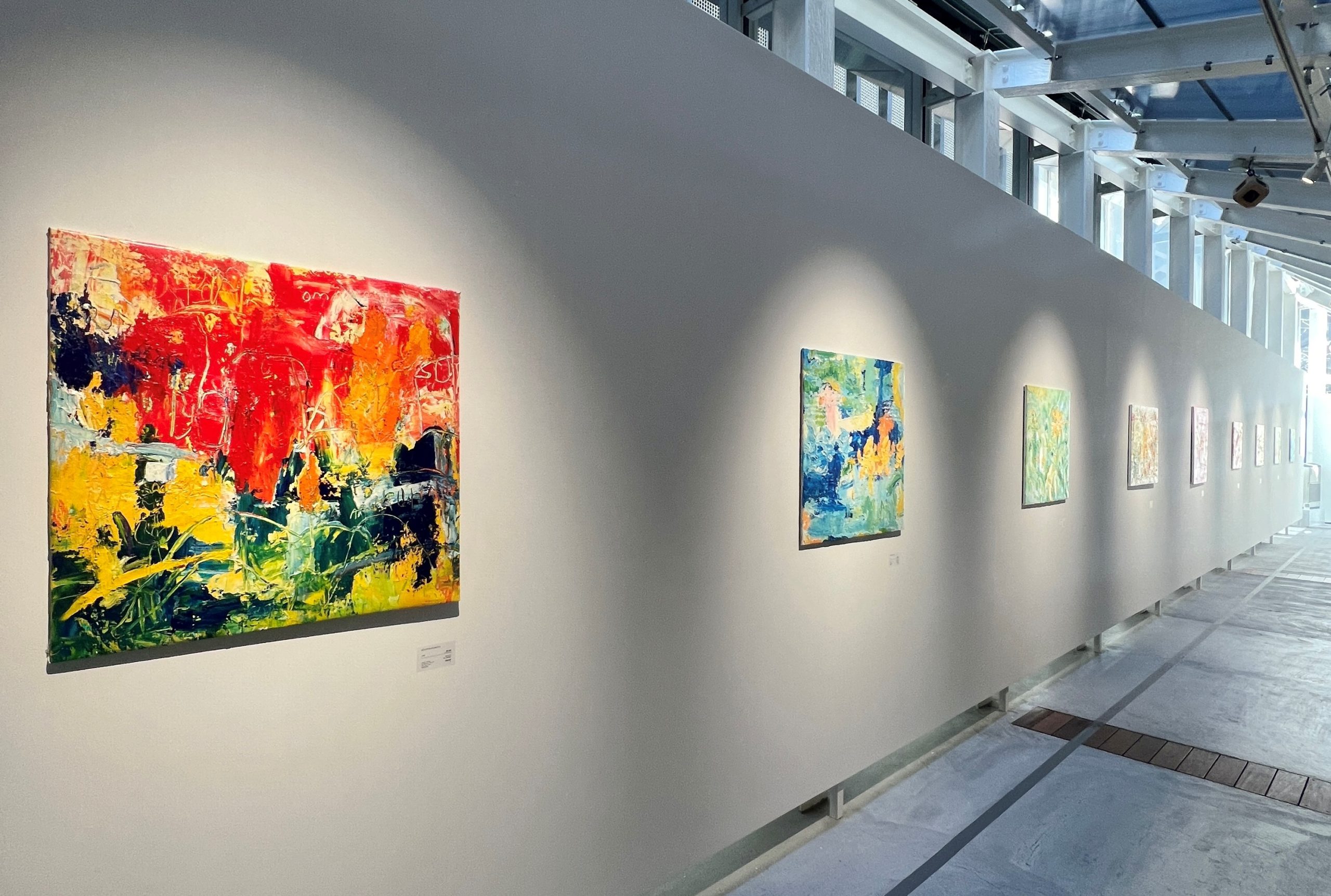
澄川温泉

